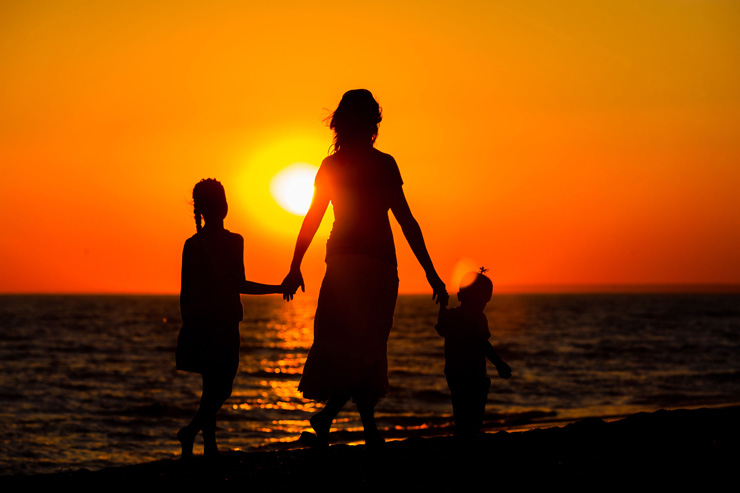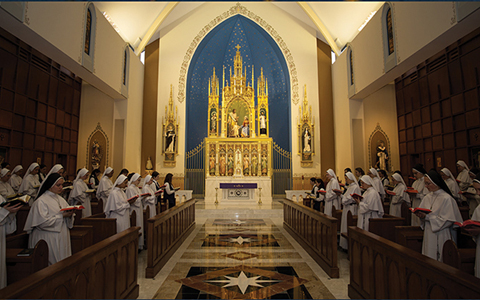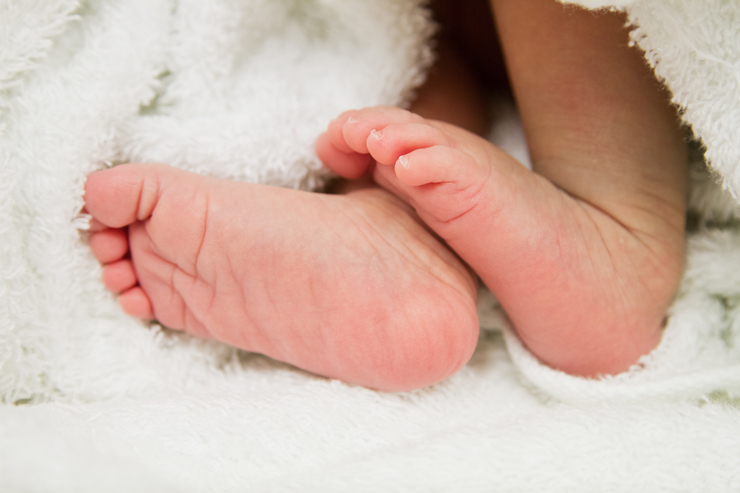 It was dark, and there was no heat. I was curled up, wrapped in a blanket that was too thin to keep me really warm. I hid my discomfort underneath a joking demeanor, hoping no one would suspect how miserable I really was. Looking back, I’m not sure I appreciated how heartbroken I was.
It was dark, and there was no heat. I was curled up, wrapped in a blanket that was too thin to keep me really warm. I hid my discomfort underneath a joking demeanor, hoping no one would suspect how miserable I really was. Looking back, I’m not sure I appreciated how heartbroken I was.
The place: my heart. The time: only a few years ago. The reason: life.
Life is tough, and it’s full of both joy and suffering. I reached a point where life looked pretty hopeless. Oh, I wasn’t going to kill myself. But there was a lot of pain—not because I had been abused, or traumatized, or even ill. I experienced the pain of life. I experienced the pain that my sin sowed into my very being.
In my mid-twenties, I met a young man who would lead me, quietly and with no persuasion, to the Catholic Church. I knew, somehow, that he was the man I would marry. I knew that if I was going to give in and actually get married, even though I considered it an outdated institution, it was going to be with this guy. He was different, and in being different, he was right.
It was sitting in Mass, going through motions I didn’t understand and saying words I didn’t appreciate, that something shifted in me. I blame it on the statues of Mary at the front of the two little churches that were in the parish we attended. They stood there, in front, not judging. They looked so gently at me, and my heart seemed to break a little each time I thought about a mother who loved me—loved me, despite all of my failings and sins.
The fondness I have for the statues in our little churches must have been similar to what the people in the small town of Meritxell felt in the twelfth century when a statue of the Blessed Mother just started showing up under a rosebush.
They were on their way to Mass in the next town. It was January 6, the cold of winter, and they were probably hurrying to get to the church. I wonder if it was a child who was alert and looking around—adults would surely have been hunkered down and focused on getting to the warmth. Whoever it was who noticed it, there was a blooming rosebush, with a statue of the Virgin Mary holding Jesus underneath.
It was an odd place for a statue, so the villagers took it with them, thinking it needed to be returned to the church in Canillo, where they were going. The next day, though, it was back, and the rosebush was still blooming.
Were they getting curious about this statue? Did they suspect pranksters from the area? Regardless, they returned it to what they assumed was its home at the local parish.
On January 8, the third day, despite snow accumulation, there was a chapel-sized patch of bare earth beside the rosebush. It was continuing to bloom and there was the statue, back at its base. The villagers wasted no time building a chapel there.
A woman I love once told me that I have always looked like I need mothered. I have two perfectly good mothers (my real mom and my stepmother), so I have never understood this statement. In fact, for many years, I thought this woman was just being kind.
And then I became a mother.
I was never going to do that. You wouldn’t find me oohing and ahhing over someone’s new baby, and I certainly wasn’t offering to hold it. No way! Not only was I convinced that I would probably drop the kid, I was certain that I wasn’t good enough to be a mother.
It was a series of small shifts that led to my change of heart. At Mass on Mother’s Day in 2001, Father gave a homily on motherhood and he talked about Mary as the mother of all of us, loving us unconditionally, walking beside us. He held her up as a model to everyone there, encouraging everyone to go to her, just as we would go to our mothers.
Through my tears, I had an image of a young woman gently holding me, stroking my forehead, patting my back. She didn’t say anything, and she didn’t need to: it was that soothing embrace, the knowledge that forgiveness was not only possible, but waiting for me, that gave me the courage to look for more.
Mary has a way of showing up, throughout history, in the most unexpected ways. She appears to the humble and the poor. You’ll find her radiating beauty from unlikely settings and to people who aren’t expecting it. She’s not afraid to get her hands dirty—she’s a hands-on mother who will gently nudge, quietly appear, repeatedly ask.
Mary’s persistence inspires me as I struggle down the road of forgiveness. In the eight years that I’ve been Catholic, I have discovered a well inside myself of things unforgiven. They are the battle scars of life, the wounds of sin, the problem children of my past. Though I may think I’m fine, it’s when I least expect it that I find a hard place in my heart, one that needs to be melted through the gradual heat of forgiveness.
Just as the villagers of Meritxell found a bare patch of earth in the midst of the snow, I find a bare patch of heart, ready for a rosebush of forgiveness to be planted. That rosebush will need some fertilizer, some watering, some pruning, before it will be able to bloom. If I leave it untended, it will die.
Forgiveness takes work; it’s not a feeling, but a decision and a journey. It becomes a habit that can open me to the grace God has waiting for me.
Mary, Our Lady of Meritxell, holds her Son and smiles compassionately at me. She’s surrounded by roses, and she’s the perfect consultant gardener for my new rose bed. She shows me how to forgive the person on the other side of the mirror, and she encourages me to pray, pray, pray. She points to the Child in her arms, about the same size as mine, and reminds me to fertilize my roses with frequent Confession and Communion. She points to her Spouse and reminds me of the graces within my marriage.
From Our Lady of Meritxell, I learn again about the importance of forgiveness. I think of the Child in her arms, whipped and tortured, crucified and buried. He embraced His persecutors with hands scarred by nail holes. I think of the certainty Mary must have had in her infinite faith, though she certainly grieved. What joy did she feel at the resurrection? Was she really surprised, this mother of His and mine?
As I stand in the fire of pain, struggling with forgiveness in so many areas of my life, I can look to the Cross, and to the mother beneath it, and remember the blooming rosebush in the dead of winter. May I have the grace to see her in front of me, leading me to her Son, teaching me more about the joy of forgiveness.















